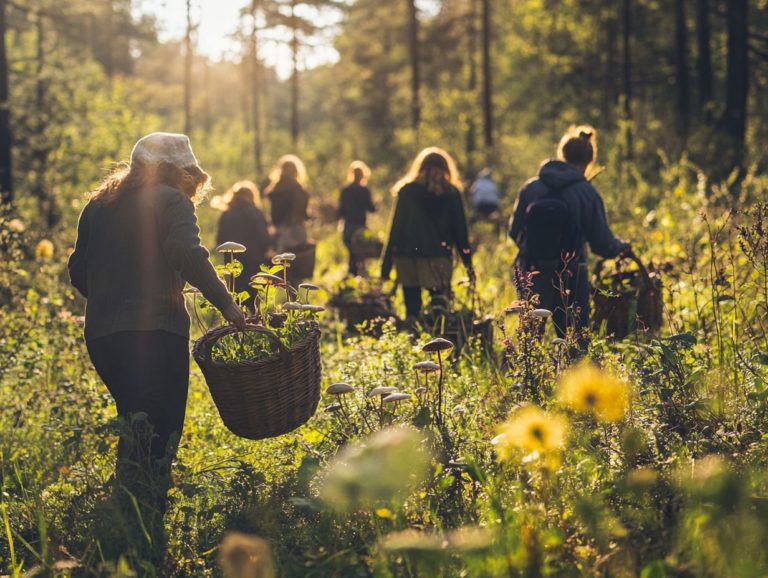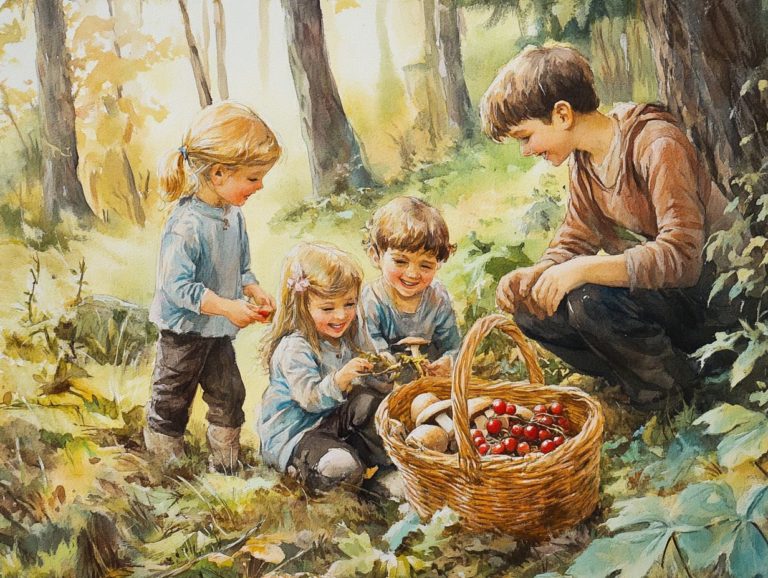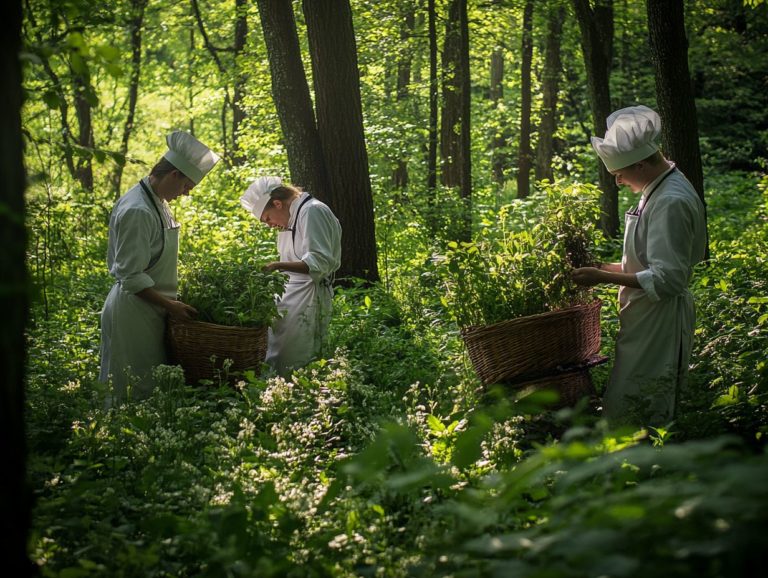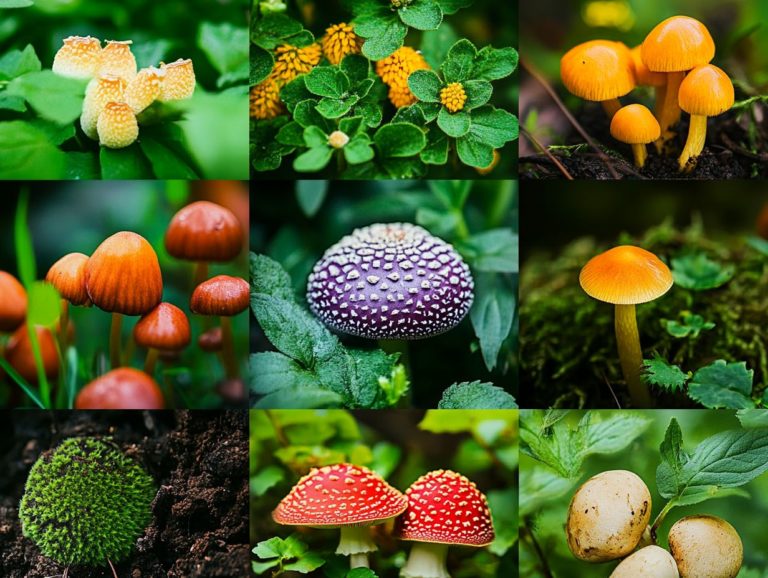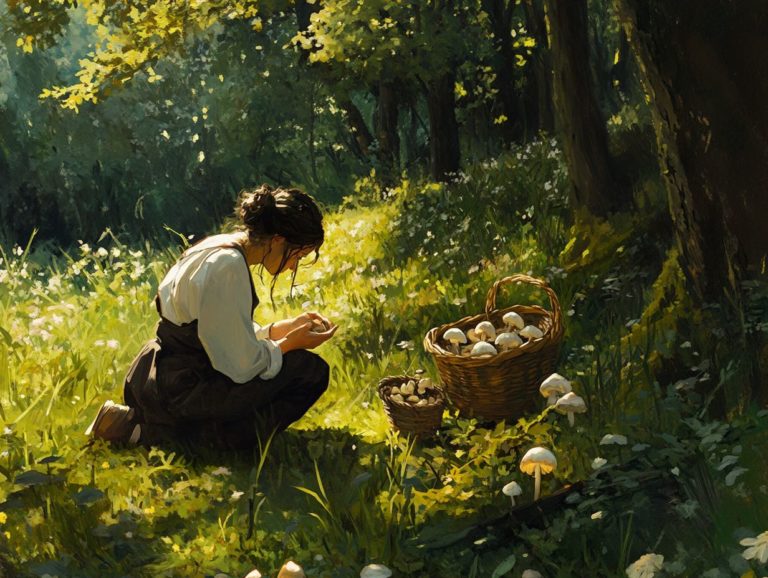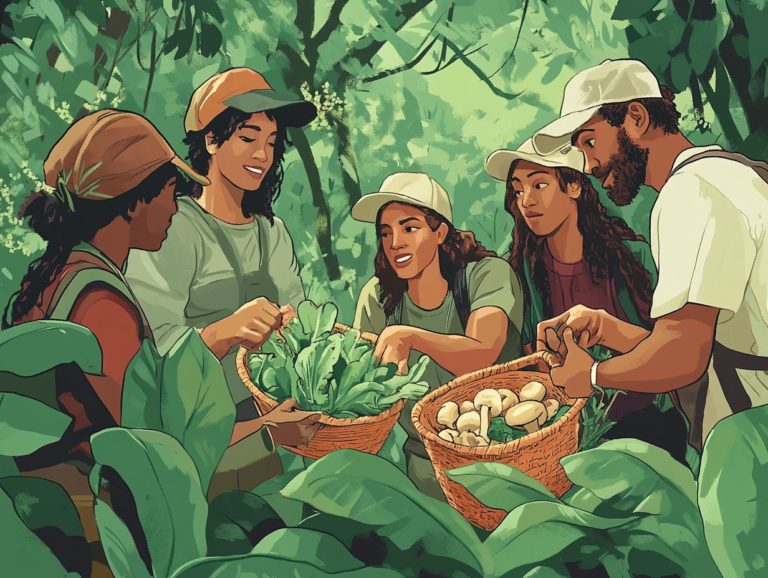Building a Local Foraging Resource Center
Are you ready to explore the world of wild foods and make a difference in your community? Foraging has become a sought-after pursuit, allowing you to connect with nature while accessing nutritious wild foods, including cooking herbs and wild edible herbs.
Establishing a local Foraging Resource Center can truly transform community engagement and foster a sense of environmental stewardship. This article delves into the many benefits of such centers, from strengthening community ties to mapping local resources and promoting urban gathering initiatives.
You ll find practical steps for setting up your center, training community members in sustainable practices, and ensuring its long-term success.
Embrace the opportunity to be a part of this exciting movement!
Contents
- Key Takeaways:
- Benefits of Building a Local Foraging Resource Center
- Identifying and Mapping Local Foraging Resources
- Establishing a Foraging Resource Center
- Training and Educating Community Members
- Sustaining and Growing the Foraging Resource Center
- Frequently Asked Questions
- What is a local foraging resource center?
- Why is it important to have a local foraging resource center?
- What services does a local foraging resource center provide?
- Who can benefit from a local foraging resource center?
- How can I get involved with a local foraging resource center?
- Is it safe to forage for wild food and medicinal plants?
Key Takeaways:
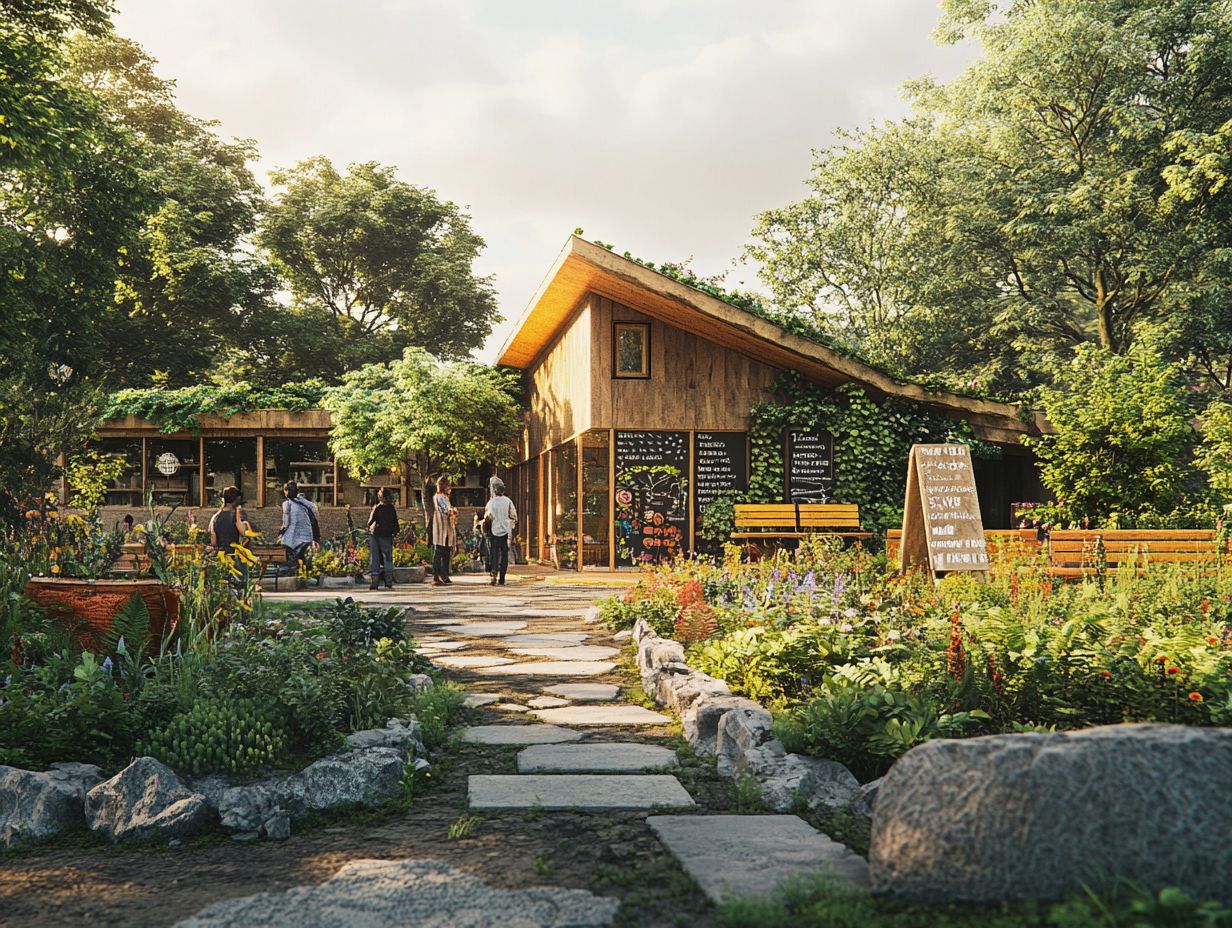
- A local foraging resource center supports the community by promoting sustainability and boosting the economy.
- Mapping local foraging resources is essential for the center’s success.
- Training community members in sustainable practices ensures the center thrives.
What are Foraging Resource Centers?
Foraging Resource Centers serve as vibrant community hubs that champion the art of urban gathering. Here, you’ll find an abundance of resources, guidance, and education on ways to gather food without harming the environment for wild foods, from dandelion fritters to edible mushrooms. Additionally, these centers provide insights on how to promote foraging in your community while tackling pressing ecological issues like invasive species, climate change, and the importance of sustainable land use.
Their mission is to enable you to identify local plants and practice responsible gathering, significantly enhancing food systems and security in urban landscapes such as Baltimore, Atlanta, and Columbus, Ohio, where community gardens thrive.
Through their engaging programs, these centers offer engaging programs that foster a sense of community. They encourage connections with nature and each other and highlight the importance of food justice and sovereignty.
Local flora is pivotal in cultivating sustainable urban environments, supporting both biodiversity and resilience. Influential figures like Marla R. Emery from the U.S. Forest Service have notably advanced urban gathering advocacy. She illustrates how gathering wild food can help reclaim cultural food practices and strengthen community ties. Her work highlights that by raising awareness of wild food resources, communities can better navigate food insecurity and address issues of food deserts, ultimately shaping a future where access to nutritious food is equitable for everyone.
Benefits of Building a Local Foraging Resource Center
Establishing a local Foraging Resource Center can profoundly enhance your community’s impact. By improving food security and fostering food sovereignty, you create a vital resource that provides access to sustainable foliage and wild edible herbs, along with gathering classes.
This initiative directly addresses the pressing challenges of food deserts and food apartheid in urban settings, paving the way for community-supported gathering and a more resilient and self-sufficient community.
Community Impact and Sustainability
The community impact of a Foraging Resource Center goes well beyond food security; it plays a pivotal role in promoting sustainability through ethical gathering practices and sustainable harvest methods. Together, these efforts address ecological issues and contribute to food justice.
By fostering connections among local gatherers, the Center creates vibrant networks that facilitate the sharing of both resources and invaluable knowledge about the indigenous plants and mushrooms that flourish in the region. You have the opportunity to exchange tips on sustainable gathering techniques, mushroom identification, and backyard gathering, ensuring that wild food sources remain abundant for generations to come.
Community testimonials reflect improved mental and physical health due to increased access to fresh, organic foods, enhancing community health. A recent study revealed a significant boost in community cohesion, with 85% of participants reporting stronger relationships with their neighbors. This collaborative approach not only enhances food security but also nurtures a deeper appreciation for the local ecosystem, underscoring the vital importance of maintaining ecological balance.
Identifying and Mapping Local Foraging Resources
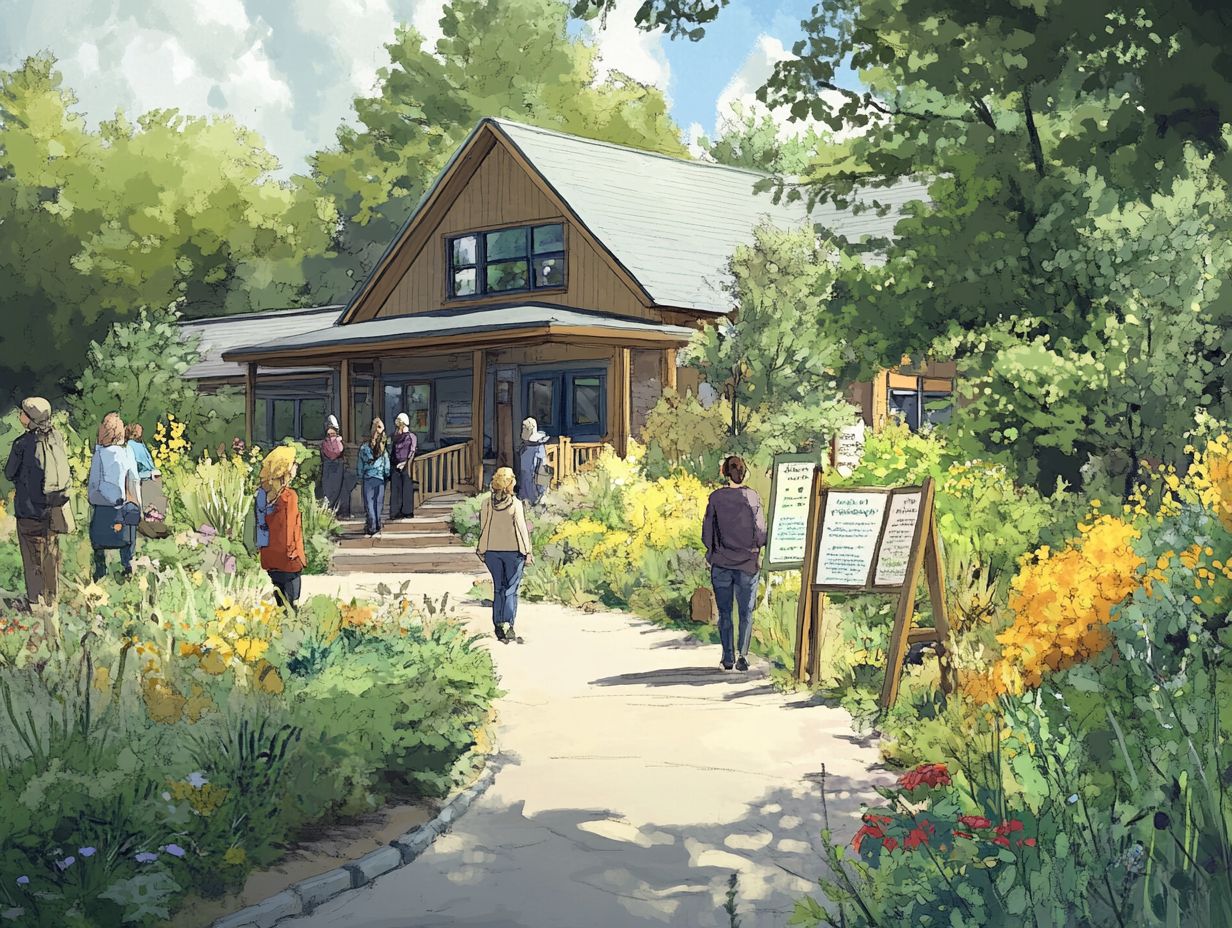
To identify and map local foraging resources, you must document areas where foraging is possible. These include parks, community gardens, and public green spaces filled with vibrant wild plants.
This effort provides your community access to a rich variety of wild foods. It enhances your connection to nature and promotes sustainable practices.
Methods for Locating and Recording Resources
Discovering and documenting foraging resources involves using citizen science platforms, GPS technology, and community surveys. You can also leverage social media, like TikTok, to engage residents in sharing their findings.
Encouraging community interaction helps create a comprehensive database of native plants and their locations. Foragers should prioritize ethical practices by only gathering what they need and avoiding endangered plants.
Fun workshops are a great way for you and your neighbors to learn about sustainable foraging and proper identification techniques, including identifying mushrooms. This approach nurtures a deeper appreciation for our natural resources.
Establishing a Foraging Resource Center
Establishing a Foraging Resource Center demands meticulous planning, particularly regarding location and facility setup. It should be easily accessible within urban environments and integrated with local food systems, like community gardens and public green spaces. For more insights, check out this guide on building a resource library for foragers.
This thoughtful approach maximizes outreach and promotes community-supported foraging while fostering greater engagement.
Choosing a Location and Setting Up Facilities
Choosing the right location for a Foraging Resource Center is crucial. It should be nestled in urban green spaces or near community gardens to maximize participation while supporting access to nutritious wild foods. Additionally, learning how to use local resources for sustainable foraging can enhance the community’s foraging efforts.
The ideal site should draw in a diverse crowd, ideally located in areas with significant foot traffic, such as parks or bustling community events. This encourages interaction among attendees.
It’s also essential to consider community demographics. Selecting a location that resonates with various age groups and cultural backgrounds, including engaging with First Peoples, enhances participation and the sharing of knowledge.
Being close to local food systems, like farmers’ markets or organic shops, strengthens the center’s mission. Incorporating essential facilities such as educational spaces for workshops and gathering areas for group foraging events fosters collaboration among participants.
Training and Educating Community Members
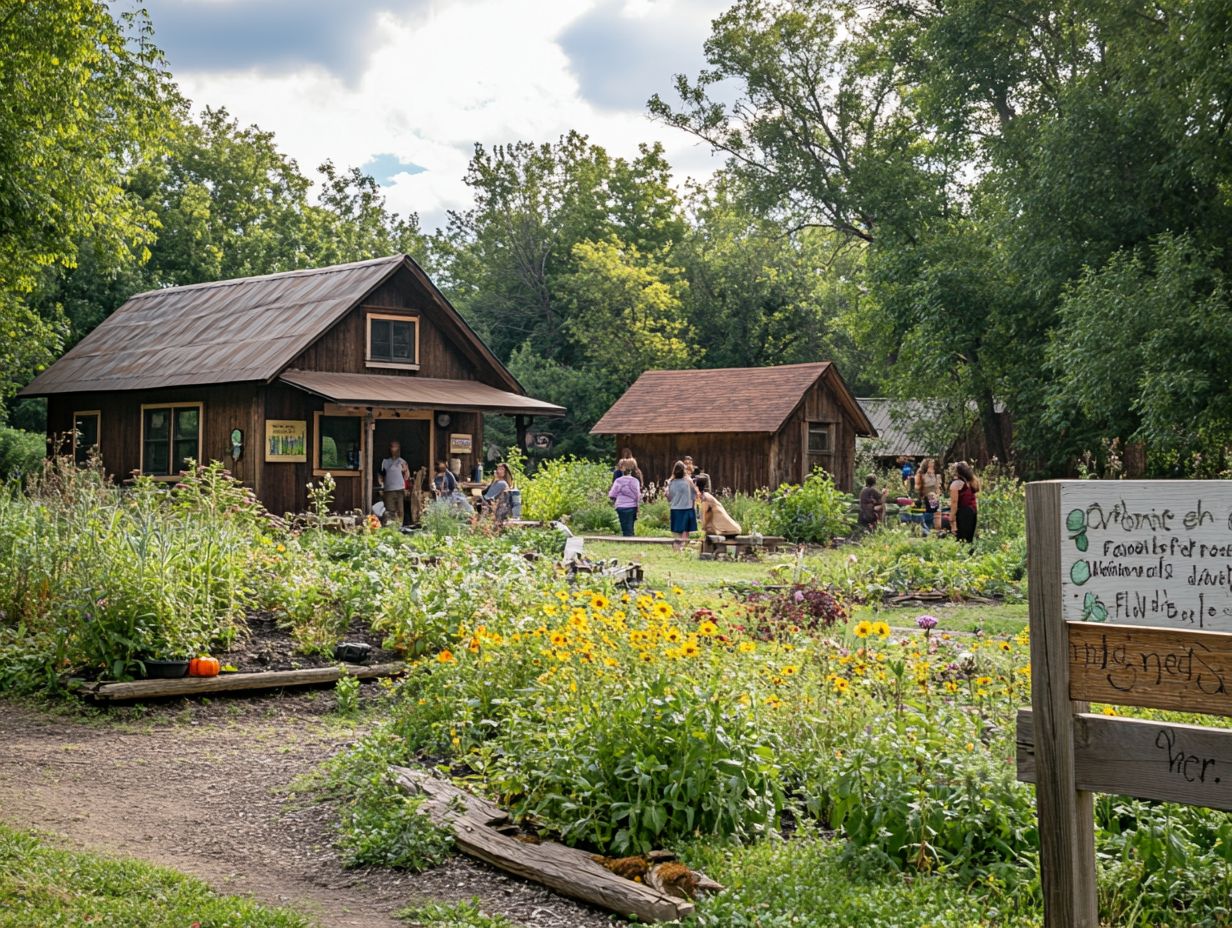
Training and educating community members on sustainable foraging practices are crucial for cultivating a culture of ethical foraging. By enabling individuals to responsibly harvest wild foods, they will not only enjoy the bounty of nature but also grasp the significance of biodiversity and ecological balance.
This knowledge fosters a deeper connection to the environment, promotes a more sustainable way of living, and emphasizes the nutritional quality of wild foods.
Teaching Sustainable Foraging Practices
Dive into the world of sustainable foraging! Learning to gather wild foods responsibly not only helps with food justice but also enhances community health by providing access to nutritious resources.
Incorporating practical strategies into your foraging education allows you to identify plants responsibly, respect seasonal growth patterns, and understand local ecosystems. Workshops underscore the importance of taking only what you need, leaving enough for wildlife and future generations. Embrace exciting ethical practices like harvesting only a portion of a patch, giving plants a chance to regenerate.
Encouraging local foraging groups cultivates a shared sense of stewardship. These groups create mentorship opportunities where experienced foragers guide newcomers in selecting safe and sustainable harvests. This approach protects the variety of plants and animals in the area while strengthening community bonds through health initiatives and food justice efforts.
Sustaining and Growing the Foraging Resource Center
Sustaining and growing a Foraging Resource Center requires a well-crafted strategy that focuses on long-term success. This means forming meaningful partnerships with environmental organizations, actively engaging with the community, and embracing community foraging to adapt to the local food supply’s ever-evolving needs.
By prioritizing these elements, you can ensure the center thrives and makes a lasting impact.
Strategies for Long-Term Success
Effective strategies for the long-term success of a Foraging Resource Center involve fostering community engagement, promoting urban foraging initiatives, and ensuring ongoing education about food security and sustainable practices. Additionally, learning how to set up foraging community events can enhance participation and support.
Host lively events like foraging walks and cooking demonstrations to attract a diverse audience and build a vibrant community. Connecting with local organizations focused on food justice opens up opportunities for collaborative projects, enhancing resources and sharing knowledge.
By hosting outreach programs that introduce residents to foraging techniques and their nutritional benefits, you create a supportive environment that nurtures interest and participation. These initiatives sustain enthusiasm and strengthen community ties, fostering a shared commitment to living sustainably and supporting local food systems.
Frequently Asked Questions
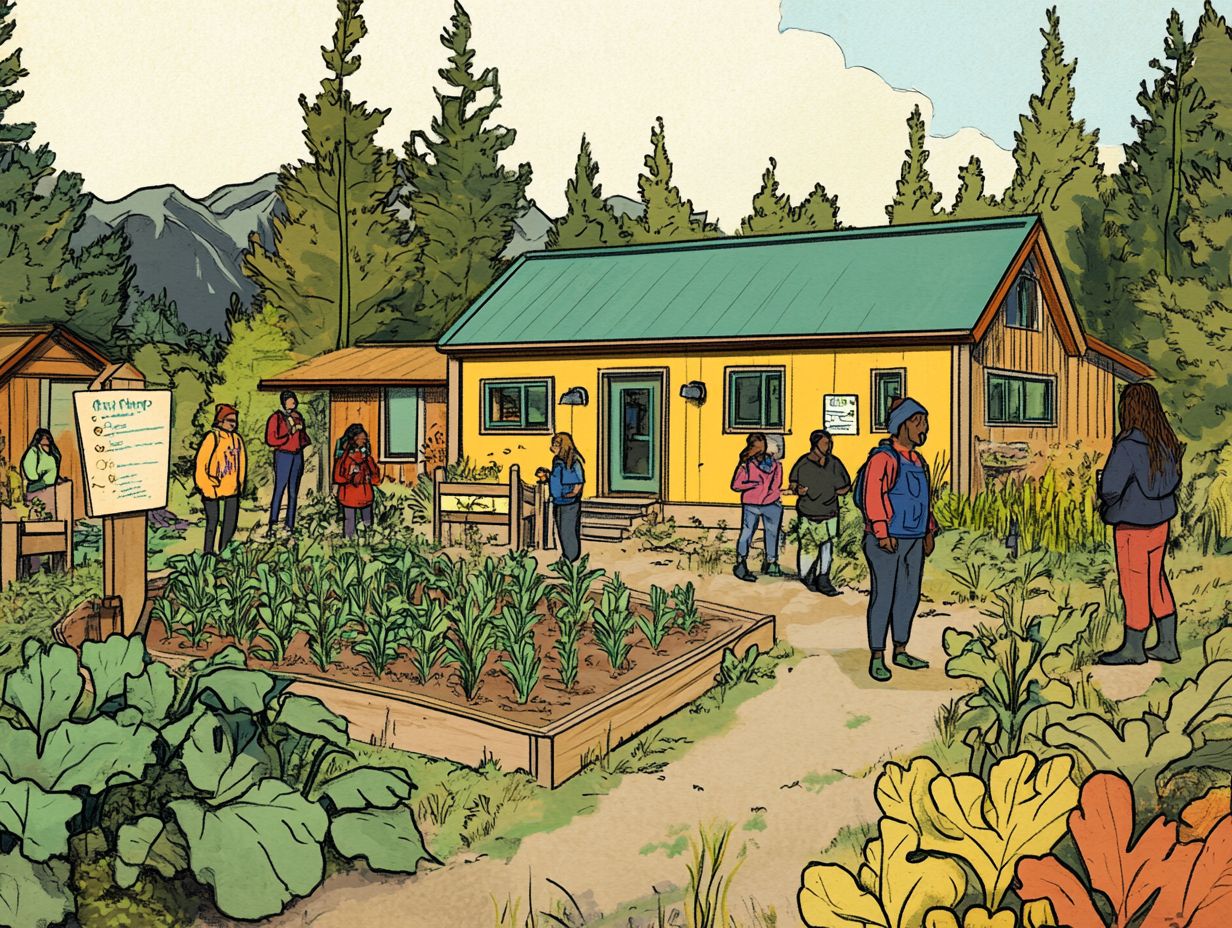
What is a local foraging resource center?
A local foraging resource center is your go-to place for learning about wild food and herbs in your area. It provides education, resources, and support for those interested in connecting with local foraging groups.
Why is it important to have a local foraging resource center?
Having a local foraging resource center helps individuals learn about sustainable foraging practices, identify local edible and medicinal plants, and build a foraging community with others who share their interest in foraging.
What services does a local foraging resource center provide?
A local foraging resource center may offer workshops, classes, guided foraging hikes, plant identification resources, and even tips on how to organize a local foraging event, providing opportunities for networking with other foragers.
Who can benefit from a local foraging resource center?
Anyone interested in learning about foraging and incorporating wild food and medicinal plants into their diet can benefit from a local foraging resource center from beginners to experienced foragers.
How can I get involved with a local foraging resource center?
You can get involved by attending workshops and events, volunteering, donating, or becoming a member. Reach out to the center to inquire about opportunities to teach a class or lead a foraging hike.
Get involved today! Discover the joys of foraging and connect with your community.
Is it safe to forage for wild food and medicinal plants?
Foraging for wild food and medicinal plants can be a fun and rewarding adventure. However, it’s essential to learn safe foraging practices and correctly identify plants before eating them.
Consider checking out a local foraging resource center. They offer great guidance and useful resources to help you forage safely.

